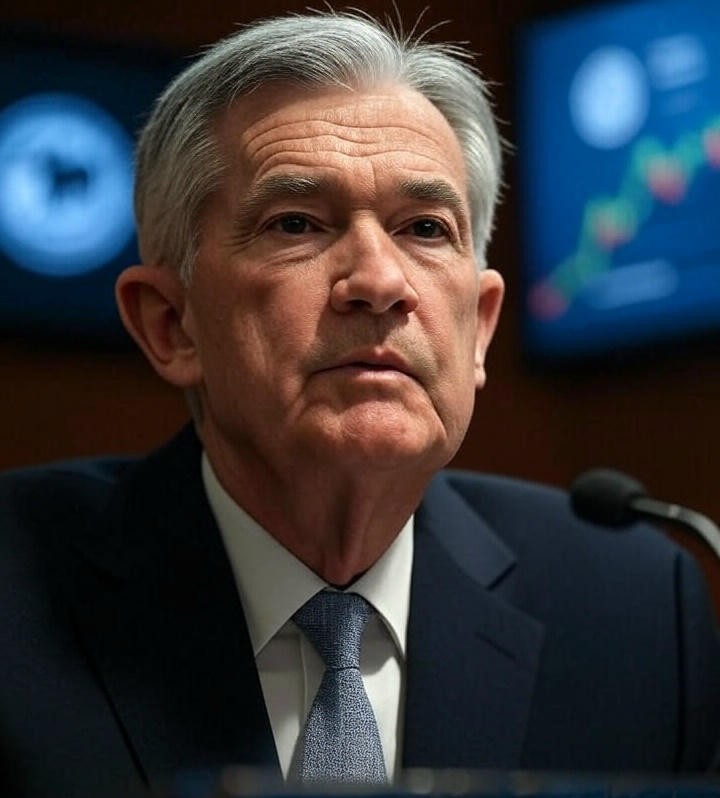The Federal Reserve (also called the Fed) recently made an important decision it kept its main interest rate steady at 4.25%–4.5%. This decision impacts everything from home loans and car EMIs to the overall health of the U.S. and global economy. What this means in simple words why the Fed took this step and what it could mean for the future.

What Did the Federal Reserve Do?
The Federal Reserve decided not to raise or lower interest rates. Instead it kept the federal funds rate — which is the rate at which banks lend to each other overnight — at the current range of 4.25% to 4.5%.
However the Fed also shared its plans for the future: it is expecting to make two small rate cuts of 25 basis points (0.25%) each before the end of 2025. By then the federal funds rate may reach 3.9%.
Why Did the Fed Keep Rates Unchanged?
Several factors influenced the Fed’s decision:
1. Tariff Concerns
There are growing worries about new or increased tariffs — taxes on imported goods. These tariffs can raise prices for consumers and create inflation which the Fed wants to control.
2. Slowing Consumer Spending
Recent data shows that people are spending less especially in retail. When consumers stop spending, businesses earn less which can slow down the economy. The Fed wants to avoid causing a recession (a period when the economy shrinks).
3. Geopolitical Tensions
Conflicts in the Middle East and other regions are creating uncertainty in global markets. This has made investors nervous and it’s one reason the 10-year U.S. Treasury yield (a key interest rate for loans and investments) has fallen.
What Is the Federal Funds Rate?
The federal funds rate is one of the most important interest rates in the world. It affects how much it costs banks to borrow money and that cost is passed on to people and businesses through loans mortgages and credit cards.
- When the Fed raises this rate borrowing becomes more expensive which slows down spending and inflation.
- When the Fed lowers the rate, borrowing becomes cheaper which encourages people to spend and invest more.
How Does This Decision Affect You?
Let’s look at how a steady interest rate impacts different parts of your financial life:
1. Home Loans
If you are planning to buy a house or already have a home loan a steady Fed rate means your interest rates may not change much in the short term. But if the Fed cuts rates later in the year mortgage rates could go down.
2. Car and Personal Loans
Your EMI on car or personal loans may stay the same for now. But if rate cuts happen later banks might offer better loan deals.
3. Credit Cards
Credit card interest rates are usually higher and change with the Fed rate. Since the rate is steady your credit card interest likely won’t go up right now.
4. Savings and Investments
People with savings accounts or fixed deposits might not see higher returns for now. However if interest rates drop later in the year bond prices may rise which could benefit some long term investors.
What’s Happening in the Economy?
The Fed’s cautious approach tells us a few important things:
- Inflation is still a concern but it’s slowly coming under control.
- Growth is slowing especially with consumers cutting back on shopping.
- Geopolitical risks like war or conflict, are making markets nervous.
At the same time the U.S. economy is not in crisis — just facing challenges. The Fed wants to support growth while keeping inflation in check which is a delicate balance.
Why Is the 10-Year Treasury Yield Important?
The 10-year Treasury yield is a benchmark interest rate. When it drops:
- It often means that investors are worried and looking for safer options.
- It can lower borrowing costs for things like mortgages and business loans.
- It reflects the market’s view that interest rates may go down in the future.
The recent dip in the 10-year yield shows that investors are expecting slower growth or more rate cuts ahead.
What to Expect in the Coming Months
The Fed is walking a fine line. Here’s what could happen next:
✅ If inflation stays low:
- The Fed may go ahead with the two planned rate cuts in 2025.
- Borrowing could become cheaper.
- Stocks might rally.
❌ If inflation rises again:
- The Fed may pause or even raise rates instead of cutting.
- Loans will stay expensive.
- Consumers may feel the pinch.
The Fed will carefully watch inflation numbers, consumer spending, global issues and job growth before making its next move.
Final Thoughts
The Fed’s decision to hold interest rates steady shows that it’s trying to be careful and patient. By planning small rate cuts in the future it hopes to support the economy without letting inflation get out of hand.
For everyday people this means:
- Stable loan EMIs (for now)
- A wait-and-watch situation for homebuyers and investors
- Cautious optimism for a softer interest rate environment in late 2025
In these times of economic uncertainty staying informed and planning wisely can help you make better financial decisions.
